How AR VR Apps Are Gamifying Exercise And Workout?
Why and How to Implement VR and AR in Fitness Apps in 2022
After articles about immersive technologies in entertainment, marketing, retail, education, art and museums, employee training, healthcare, construction, and other industries, we dedicate this post to the adoption of virtual and augmented reality in fitness.

AR and VR deliver real-time immersive experiences with the help of various devices. AR superimposes digital imagery on the physical environment and objects viewed through a device, such as a smartphone camera or smart glasses. VR allows interactions with virtual objects in completely made-up environments using a headset, controllers, and wearables.
The global online/virtual fitness market size was valued at $6,046 million in 2019 and was projected to grow at a CAGR of 33% until reaching $59,231 million by 2027. During the pandemic, workouts moved outside or into people’s living rooms and backyards, aided by online videos, live-streams, and mobile fitness apps. After gyms re-opened, some people continued to enjoy working out in the safety and comfort of their homes.
However, while these media help access training sessions, plan workouts, and keep pace, their limitations don’t allow for improving a user’s technique. This is what the latest AR applications are made for. Simultaneously, virtual reality offers games and entertainment that can help most sedentary people burn calories and change the overall perception of fitness.
This article is for entrepreneurs interested in leveraging AR and VR for fitness and sports. We’ll list their benefits and primary use cases and briefly explain how app developers can enrich their offer with immersive experiences.
The Nuances and Benefits of Using Virtual and Augmented Reality in Fitness
The differences in the interaction with the real world determine the different ways to use AR and VR for exercising. This greatly affects VR and fitness.
In a virtual workout environment, a user’s body becomes the controller. For instance, if their character in a boxing game punches an opponent, the user has to move in real life. VR headsets blocking the light and real world from the wearer’s view and claiming their full attention essentially preclude interaction with physical objects and persons. This may cause dizziness in some users and pose safety risks when users work out.
An AR headset or smart glasses let wearers stay present in the physical world and aware of the current situation while acting as a co-pilot during workouts. For example, users can project a coach’s hologram in their living room or watch a coach performing the correct form in front of them while viewing their heartbeat rate and other indicators on the smart glasses’ lens.
AR fitness applications can also run on mobile devices, but carrying a smartphone and sticking one’s eyes to the screen all the time while exercising is counterproductive, if not dangerous. For this reason, we can expect the growth of safer and more efficient hands-free solutions. Read more: How to Use 360° Equirectangular Panoramas for Realism in Games
Modern AR headsets already have lighter, more sunglass-like designs that prevent sweat deposits and facilitate cleanup. This makes them suitable for fitness and active gaming. Lightweight devices with dual wireless controllers with six degrees of freedom (6 DoF) that allow for accurate movement tracking along six axes to pinpoint the position and orientation of the user’s hands promote further adoption of AR in fitness.
5G speeds will support advances in SLAM (Simultaneous Localization And Mapping), better software and lightweight standalone AR headsets, and their uses beyond the limits of WiFi, such as outdoor workouts and sports.
Meanwhile, the application of VR and AR in fitness already makes exercising more fun, engaging, and effective, overcoming most of the cited obstacles to exercising.
Convenience
Finding time to attend a gym may be challenging with busy schedules. Some people are still hesitant about crowded spaces. AR and VR can partly simulate a gym experience; the trend accelerated during the pandemic, but its benefits remain relevant. It’s easier to don a VR headset or smart glasses than go to the gym or even search for videos. Users can work out, often without any sports equipment, at whatever time and location they like.
Apathy and shyness prevent many people from exercising at gyms. With fitness VR, users don’t need to travel there at fixed times and interact with coaches and others. Instead, they can work out as much as they want, at their own pace, in the privacy of their home, without any embarrassment or peer pressure. Moreover, they can do so in short increments, e.g., several 10-minute game sessions throughout the day.
Immersive AR and VR technologies enable people to create a favorite customized workout environment anywhere, e.g., on a trip.
Efficiency
AR and VR applications can make exercising easier by offering instructional videos and real-time guidance through each phase of a training session. They can also feature reminders that promote regular exercise.
San Francisco State University researchers found that "moderate to vigorous intensity" exercise occurs when people engage in certain kinds of VR-based video games. Occasionally, it may burn as many calories as a medium to intense exercise.
Some VR games weren’t initially made for fitness but gradually have earned a reputation as engaging and engrossing calorie-burners. More games are specifically designed to get players up and moving and steadily pump up the action to maximize heart rate. Such programs focusing on cardiovascular exercise and getting the muscles working can rival the most intense spin class or group workout setting for overall fitness benefits.
There is also a link between physical activity and improvements in patients with depression, anxiety, and PTSD, so it might be beneficial to include AR/VR features in mental health apps.
VR hardware designed to track a wearer’s most minute movements is excellent for tracking workouts. AR/VR-enabled apps and devices can record more real-time data, e.g., the number of steps, kilometers done, time taken, speed, calories burned, etc., to help users adjust the intensity of their workouts, assess their effectiveness, track progress, and compare with others.
For example, a wearable device integrated with AR can help users maintain the heart rate at a level appropriate for their age and ensure they work hard enough without over-straining. Having these details at one’s fingertips is crucial for athletes. Coaches can also analyze a recorded workout session to point out mistakes and make recommendations.
Motivation
Studies suggest that 44% of inactive people don’t exercise because it is not fun. People quickly get bored with repetitive tasks. Gyms and health clubs may utilize VR technology to make exercises more exciting and AR to make workouts more enjoyable, effective, and safe.
Immersion in a virtual environment and engagement with a game prevents the brain from noticing exercise-induced pain, discomfort, and how hard the body works. Most players reportedly estimate their perceived exertion as lower than what it is. When people are doing something they enjoy, rather than counting and pushing through the pain of one more rep, they are more likely to repeat the experience and eventually build a habit.
Users can exercise in virtual reality both solo, which helps build beginners’ confidence, and with virtual crowds or real people, which can be more motivating.
A VR fitness game can also be highly addictive, as players try to improve their scores each time. Competition against other people isn’t always a part of traditional workouts, but some games offer this opportunity, which makes players work out harder to improve their indicators and scores and increase their position on the scoreboard. Seeing their progress can inspire them to keep going and reach their fitness goals.
These benefits translate into the following significant advantages for fitness companies and app developers:
Enhanced brand visibility. The application of state-of-the-art technology attracts the attention of younger, tech-savvy, and affluent audiences. It also creates a reputation of a modern brand offering the best experiences for its customers.
Competitive advantage. All of the stimulating immersive experiences, gamification, efficiency, and other benefits delivered by AR/VR features can make a fitness app more useful and valuable than the competitors’ offers.
Reaching new audiences. VR is often perceived as geared toward the “gamer” demographic, especially teens and people in their 20s. Fitness-oriented VR games can thus entice users who wouldn’t think about extra activities otherwise. VR-enabled home workouts will appeal to people that feel intimidated to exercise in public, and sensors, navigation, and statistics – to professional athletes.
Dynamic VR workouts of different types can cater to people of all shapes, skill levels, and ages. Customers happy with your innovative and delightful fitness experience will likely share it on social media and recommend it to their friends, colleagues, and followers, bringing you new customers.
Higher customer engagement. The adoption of AR and VR in fitness centers can encourage more customers to attend regularly and continue with their workouts. The additional value in your fitness product will persuade them to stay with you longer.
Turning workouts into games allows app developers to capitalize on the human desire for instant rewards and achievements instead of waiting for weeks to see the results of workouts. The exclusive focus, more enjoyable process, and perceived lower exertion during VR fitness games mean that players can play and stick with a game longer. So do the abilities to live-stream, record, and share workouts, and to exercise together with friends, family, and others digitally. This leads to better customer retention, higher revenue per customer, and other key indicators.
Higher revenue. Gyms and fitness clubs employing AR and VR technology to make exercises more fun, effective, and safe for members will be able to increase their earnings. A provider delivering a higher quality service that puts it ahead of the game can raise the prices.
Now that you know some of the benefits of AR/VR features for workout app developers, businesses, and consumers, let us classify the ways to leverage those features.
Use Cases for Augmented and Virtual Reality Fitness App Development
Virtual coach
People choosing to exercise at home may practice high-intensity interval training (HIIT), yoga, or Pilates with the help of VR headsets and virtual coaches.
For example, FitXR offers boxing, HIIT, and dance workouts varying in length from minutes to an hour for beginners, intermediate, and advanced users. A team of professional fitness instructors designed and choreographed them to offer a new class every day of the week. Users can choose the virtual environments and burn calories and improve their strength to new tracks from popular artists on their own or with up to six friends in real time.
Supernatural offers fast-paced cardio and full-body workouts (boxing, hitting targets, etc.). Its gamified experiences take users to breathtaking locations where live-action coaches provide one-on-one routines, stand by their side, motivate, and give tips to fuel the users’ progress.
An AR fitness app can also include a hologram coach feature so that users can project a virtual personal instructor at the gym or at home via smart glasses or tablet, e.g., for yoga or daily exercise session. The virtual coach can demonstrate routines and techniques, provide tips and encouragement, and voice the calories burned and other indicators.
Enhanced fitness experiences
Many people consider regular exercise challenging because routines tend to grow monotonous. AR and VR can help ensure workout sessions are exciting and feel different every day.
Firstly, applications can be designed to meet a variety of training demands, allowing users to mix up their workout routines. Secondly, immersive media have the power to make experiences more valuable and unique.
Supernatural enables users to experience destinations as fantastic as the ruins of Machu Picchu or the Martian surface. This method may transform exercising on a stationary bike, treadmill, or rowing machine.
For example, VirZOOM’s “VZfit Sensor Kit” attached to a stationary bike coupled with an Oculus VR headset can take a user thousands of miles away from their living room or health club, e.g., to the desert of Arizona or the Game of Thrones locations. They can follow a virtual trainer, compete with fellow cyclists, or even ride Pegasus through a canyon.
Gamification refers to applying typical elements of game-playing – such as point scoring, competition, and rules of play – to an activity. Fitness software developers should gamify every program as much as possible to ensure high user retention, customer loyalty, and various monetization opportunities.
AR has the potential to make exercise more exciting, active, and enjoyable by incorporating interactive aspects, such as checkpoints and timers, games, and rewarding elements, into routines. For instance, instead of simply jogging, users may chase cute 3D creatures or go “treasure hunting” with a hybrid of a regular fitness app and Pokemon Go. VR may add even more intrigue, adventure, and gratification to a full-body exercise. In this way, the technologies of additional and virtual reality are directly involved in the development of fitness applications.
Black Box VR has gone further than providing gamified gym experiences and virtual coaches. Their award-winning dynamic resistance machine re-imagines the use of VR in gym workouts and the overall fitness experience. The system captures over 50,000 data points, and artificial intelligence analyzes it to tailor each workout in real-time, e.g., instantly changing the resistance levels or keeping the user from making a wrong motion repeatedly.
AR also makes working out more entertaining, informative, and engaging by adding tutorials, videos, tips, etc. For example, image recognition or marker-based AR technology can help smartphone users understand how some tricky fitness machines or equipment work.
AR-powered devices can help personalize, facilitate, and add more fun and safety to workouts and games with real-time data. For instance, Solos Smart Glasses come with geofencing and activity tracking capabilities and pair easily with a mobile device. The smart glasses track the user’s steps, distance traveled, calories burned, active minutes, sleep, and heart rate, merge the performance data, and put them all in front of the user, helping to customize their workouts. The glasses also allow recording the workout routine.
The Golfshot mobile app features real-time GPS distances – to the center, front, and back of the green – and, with Golfshot Pro, interactive distances to all hazards, layups, and targets.
Fitness-promoting games
Beat Saber is an iconic early example of how VR games engage players in active exercise, primarily air punches, squats, and kicks. In this rhythm game, players slash targets and dodge obstacles coming from varied angles to upbeat music in a futuristic world. Sound and visual effects accompany each cut, emphasizing the rhythm and making players almost dance and burn calories.
The newer OhShape game includes dodging virtual obstacles, striking dance poses to pass through some walls, and punching others using controllers. Players have fun and actively move their whole bodies, hardly realizing it. Four difficulty levels and various gameplay settings allow customizing the experience to each player’s skills. Players can practice level sections to perfection, compete with friends and family, and complete workout challenges.
Creed: Rise to Glory offers players an opportunity to challenge their body and mind by playing or fighting iconic boxers in an immersive universe inspired by the Creed™ films. Users can play in Freeplay or PvP modes. Phantom Melee Technology mimics the real-life effects of throwing and taking punches, such as the out-of-body sensation of getting knocked out. Players can increase their cardiovascular strength with Endurance Mode and track burned calories and workout time.
The potential of augmented reality in transforming games into workouts is more modest, but app developers explore the opportunities. For example, AR Runner has players run through digital dots projected on the ground as quickly as possible.
Sports skills improvement
VR has the potential to be used by professionals. For example, VR fitness games can help build an athlete’s coordination when a live training session is not possible. Boxing games offer opportunities to hone precision. Targets are angled to make players imitate the motion of a hook, jab, or uppercut, and they have to guess which side to punch from, when to duck, or whether a jab, a cross, or a hook is coming. Precision and speed earn them points.
There are more VR games on the market geared toward sports. However, due to VR’s limitations regarding interactions with the real world, it is primarily augmented reality that is expected to help enhance the skills of professional athletes and enthusiasts. Both mobile devices and hands-free solutions can be used.
One great example of augmented reality fitness app development is Homecourt, an official NBA partner. This mobile app was created using the expertise of prominent basketball players to adjust the users’ training and techniques. It captures all of the user’s shots, moves, and stats and provides real-time feedback and analysis. Immersive drills and workouts that feel more like a video game encourage users to stick to them, practice more, and achieve better results.
Everysight developed Raptor AR smart glasses for cyclists and triathletes. Route navigation, time, distance, speed, heart rate, cadence, and power are displayed in high-resolution in the athlete’s line of sight while keeping their vision clear. A look-and-shoot camera captures high-definition video for eventual analysis.
The Implementation of AR/VR Features for Workout App s
If you wish to implement VR into a fitness app for your company or the public, we would recommend consulting experienced VR developers first. Experts can help you:
Formulate the idea and requirements for your VR fitness app or game Conduct the necessary market research and competitor analysis, if needed Conceptualize the main features and the product’s layout and structure Advise you on the optimal technology stack for the realization of your idea Realize a proof of concept to validate the technical feasibility of ideas that raise questions Prepare the project documentation and design Estimate the cost of your VR app or game development and plan the project…
and more.
If the consulting VR development agency proves competent, reliable, and affordable, you can hire the specialists for the subsequent phases of your virtual reality fitness app development:
3D modeling
Content creation
Programming of the customer-facing front-end and back-end structure with servers, databases, APIs, and storage solutions
Testing and debugging
Publication on the app stores
Maintenance and improvements
Basically, the same process applies if you want to build an AR mobile app or implement AR into a fitness app you already have. Some of the AR features that can enrich your app experience and make it more competitive include:
Real-time data collection, visualization, and analysis. For example, a mobile or wearable device can update users about what’s going on in their bodies and track steps and other indicators. Users can assess the intensity of their workout, learn how many kilometers they have to make, or unlock prizes based on the number of steps taken.
Computer vision . This technology enables computers to collect meaningful information from various visual inputs and take action. AR devices can collect, process, analyze, and recognize images and videos for giving sophisticated and interactive feedback.
AR content . Users can view personalized workout videos through smart glasses at a gym or learn from a personal fitness instructor, albeit virtual, right in their bedroom.
It is not enough to understand what AR-powered features you want to include in your product. You need to know exactly why you need these features, how they will work and further your business objectives, how you will monetize them, and so forth. Since many crucial questions will require answers as early as possible, it is reasonable to engage a reliable fitness software development company from the onset.
The Future of VR and AR in Fitness Apps
VR is emerging as the next big computing and consumer platform, and VR headsets and smart glasses with embedded AR may become as ubiquitous as laptops and smartphones in several years.
Currently, even the best VR headsets on the market are still too heavy to wear for hours. There are also risks to the users’ eyesight and overall balance, motion sickness when a multisensory stimulation goes wrong, and even neck injuries. We may have to wait a few years until manufacturers fix these issues and the headsets look more like regular glasses. Next-generation suits, gloves, and gadgets for more realistic and beneficial experiences are also on the way.
Another major impediment to the broad adoption of VR and AR in fitness is the cost of hardware and software. Besides the headset, consumers may end up buying additional equipment like weights or haptic devices, and finally, they will have to pay for installing the fitness programs. However, the prices are likely to go down gradually, as often happens with electronics.
Together with developments in technology, these factors will pave the way to new possibilities for employing VR in gym, private, and outdoor settings.
The AR glasses industry also develops lighter and user-friendlier models, making it easier to work out while wearing them. These smart glasses and headsets will bridge the gap between gaming and traditional fitness activities. The technologies upon which AR is being built are evolving, and 5G will be a crucial enabler for more efficient outdoor experiences.
Consumers, particularly people who travel frequently, will be able to work out from any place, anytime, without compromising quality and intensity. We can also expect to see more AR-VR in exercise sessions and customized training regimes.
The reach, adoption, and impact of VR will grow as entrepreneurs, developers, and consumers understand and take advantage of its full potential. Soon, we will likely see the rise of fitness studios offering immersive tech-driven approaches to exercise.
The types of exercise available in virtual reality will proliferate in the months and years to come. App developers will also likely focus on resistance and strength training elements as opposed to the mostly cardiovascular training offered currently.
Simultaneously, research, testing, and rating of VR games will begin, such as measuring the actual calorie expenditure and other KPIs for various games, for the benefit of specialists and consumers interested in obesity prevention, rehabilitation, therapy, etc.
The next step will be the socialization and virtual competitions that may bring about new entertainment industry.
AR can enhance the current fitness trends, enable new exercise modes, and create new sports, involving more people in the fitness movement.
We may not continually notice how we get used to all these innovations. Meanwhile, cutting-edge technologies, daring entrepreneurs, and developers pushing the boundaries are already changing the world. Join the revolution today! Get in touch with Onix’s AR/VR team now!
FAQ
How is augmented reality used in training?
Some examples of AR-powered features in fitness apps include real-time data visualization, gamification elements, holographic coaches, and edutainment content.
How can augmented reality transform the fitness industry?
Currently, the advantages of using AR in fitness include increased user engagement, brand visibility, and extended audiences. In the future, AR can enhance the current fitness trends, create new fitness regimes and sports, and enable new revenue streams.
Can VR be used for fitness training?
Yes. The completely immersive nature and interactive quality of VR experiences, data collection, and intelligent feedback make it a perfect tool for people who wish to keep fit independently.
What are the benefits of leveraging AR and VR in fitness?
The primary benefits for the consumers include convenience, efficiency, and increased motivation. Entrepreneurs that invest in virtual and augmented reality fitness app development can expect:
The Top VR and AR Fitness Apps
Find out why XR fitness is so beneficial, and get a sampling of some top AR and VR fitness apps.
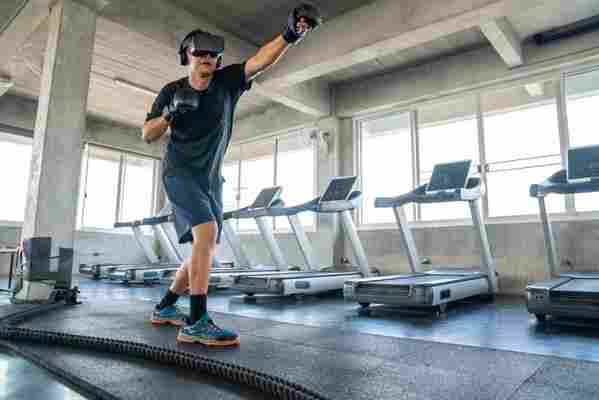
Skip the gym…exercise in the metaverse! With the help of a myriad of AR and VR fitness apps, immersive workouts from home (or anywhere!) are absolutely possible. Find out why XR fitness is so beneficial, and get a sampling of some top AR and VR fitness apps.
Virtual reality isn’t just for gaming: It’s also a great tool for getting in shape.
Some reports say almost 70% of all gym memberships go unused after the first few months, costing people millions of dollars annually.
People still want to get in shape, however, and “exercise more” often tops the list of New Year’s resolutions every year.
Could VR and AR provide solutions for people who want to get in shape, but can’t motivate themselves to get to the gym?
In the last few years, fitness apps in the extended reality (AR and VR) world have exploded, and now millions of people are using immersive experiences to move more and get healthy. Using AR and VR in your fitness routine can:
Provide real-time feedback on your workout and your overall health
Give you access to virtual instructors
Help you pick the perfect personalized workouts, based on your fitness goals
Gamify exercise and make it more fun
Offer cross-training opportunities that help you avoid injury
Add healthy competition with other virtual players
Give you the flexibility to work out anywhere you want
As we look forward to the possibilities of the metaverse, let's take a look at some of the most innovative and functional VR and AR fitness applications.
AR Fitness Apps
Here is a small sampling of some of the many augmented reality fitness apps that weave digital content into a person’s actual environment:
Zombies, Run! : In this running app, users listen to instructions from a helicopter pilot as they flee a zombie apocalypse.
In this running app, users listen to instructions from a helicopter pilot as they flee a zombie apocalypse. Prayoga : This yoga AR app uses body tracking technology to give users feedback as they perform yoga asanas. When using Prayoga on the Apple Watch, workouts can be automatically synced with iPhones using ShazamKit.
This yoga AR app uses body tracking technology to give users feedback as they perform yoga asanas. When using Prayoga on the Apple Watch, workouts can be automatically synced with iPhones using ShazamKit. Golfshot : Award-winning Golfshot lets golfers experience AR through their phones, right on the course. The app helps them identify targets and hazards in real-time, and even gives recommendations on which clubs to use!
: Award-winning Golfshot lets golfers experience AR through their phones, right on the course. The app helps them identify targets and hazards in real-time, and even gives recommendations on which clubs to use! Gymnotize: This training app uses AR to show users how to use proper form when lifting weights and provides corrections when needed.
VR Fitness Apps
Fully immersive VR fitness apps are gaining popularity as well. Some examples of VR-based workout applications include:
How AR VR Apps Are Gamifying Exercise And Workout?
Technology has been long considered an enemy of physical activity, but augmented and virtual reality can be seen rapidly transforming the fitness industry. This technology is advancing exponentially, with numerous gyms and fitness clubs now using it to make workouts more enjoyable for participants while increasing their profits. As a result, it is fair to assume that augmented and virtual reality workouts are the thing of the day.
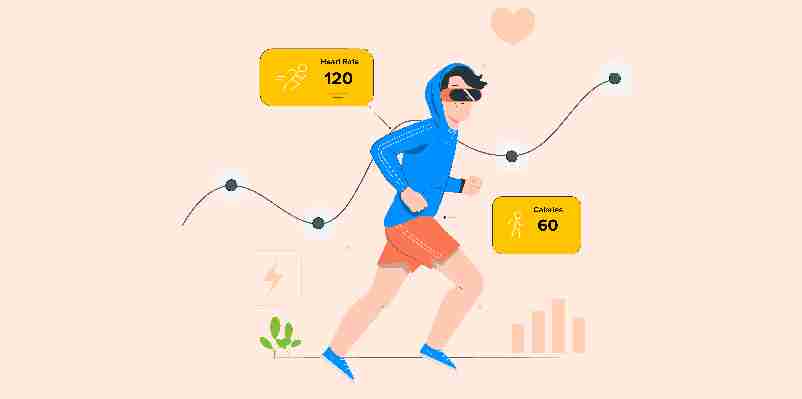
Let us explore how AR and VR are applications are gamifying exercise and workout:
Augmented reality (AR) mixes up the digital content into a person’s actual environment and makes it interesting. Businesses are benefiting from this technology by enticing consumers and growing their customer base. Some of the best examples of AR technology widely used today are Snapchat and Instagram filters.
AR fitness apps, too, have created much buzz among the masses. According to GrandView Research, the size of the AR industry reached almost 18 billion dollars in 2020 and is expected to grow at a compound annual growth rate (CAGR) of 43.8% from 2021 to 2028.
The Expected Annual Growth Rate of the Global AR Industry from 2021 – 2028
Virtual Reality, on the other hand, is loved for the immersive experience that it offers. You could be cycling or running in any part of the world by just wearing a simple VR headset. The sounds, the visuals are as good as any real experience.
Consumers-facing fitness VR applications end up combating the boredom associated with the exercise. The immersive sounds and details make it much easier for people to work out. An American startup created a Black Box VR. This unique virtual reality fitness apps allows users to be physically active while wearing a VR headset and playing an online shooter game. Various virtual reality-based gamification fitness apps enable people to stay physically active while playing an exciting video game.
According to recent statistics by Statista, augmented reality and virtual reality market size are expected to rise from US $30.7 billion in 2021 to US $296.9 in 2024.
Exponential Growth of AR and VR Market Size
VR and Augmented Reality workout apps have also witnessed an increase in users during the pandemic. Even the people on a strict fitness regime could not hit the gyms, and the situation has not improved even now. In such cases, augmented and virtual reality mobile fitness apps are assisting people to reach their fitness goals.
There are several ways in which the AR/VR based gamification of fitness changes the traditional methods to stay fit. Let us have a look in the next para.
7 Ways to Gamify Your Exercise Routine
Offers new ways for a workout regime
Various AR VR app development services offer gamification of workout and fitness; for example, there could be a virtual cycling competition where you can compete with your other fellow mates and even share your progress socially. The competitive nature of humans allows them to enjoy these VR games with total concentration leading to fun and exercise.
Keeps you motivated
One of the most prominent challenges people face to meet their fitness goals is a constant motivation. With the help of augmented and virtual reality workout apps, it has become easier to keep up the grounds and zeal to stay fit. After all, who would not like to play their favourite game and stay healthy in the entertaining journey? Moreover, you get a chance to beat your high score every time.
Sets achievable goals
A trainer at the gym constantly trains you to improve your strength and carry out the most demanding workout regimen. A trainer sets goals that may seem a little challenging to achieve initially, but you surpass them all, reaching towards your fitness goals as you progress. Just like your trainer, your fitness apps for a VR workout can help you set goals, and the rate of your activity will decide whether they have been achieved or not.
Suggests exercises as per body needs
Some apps would simply track your activities and, based on your BMR (Basic Metabolic Rate), age, and body weight, offer a routine to achieve maximum outcome. The training provided is quite challenging, making it easier to achieve your workout goals.
Suits your schedule
Unlike hitting the gym early morning or in the evening, you can use virtual workout apps as per your schedule. All you need to make sure is to complete the activity. However, many gyms offer virtual reality games as a part of their exercise regime.
It is fun
Every one of you must be aware of the play stations and their craziness among the masses. Now imagine if, while playing, you could burn those extra calories and reach your fitness goals. Wouldn’t that be amazing! This is now possible with the help of virtual reality workout apps that require you to move your body and burn some calories while playing games.
Keeps track of your health
A sedentary lifestyle and changed eating habits have made all of us prone to various lifestyle disorders. With virtual and augmented reality fitness apps, you can now keep track of your health condition. The apps will guide you to the type and amount of workout you should be doing. You may also need to feed in some data to make sure that you get optimal solutions.
Allows you to wander
With virtual reality setups, you can visit any place. You might want to run on a beach or go cycling in the mountains. Everything is possible with virtual reality workout sessions and gamify exercise with VR. The immersive tech allows you to see, hear and feel what your heart desires, making exercising a whole new and adventurous concept.
[Also Read: VR training – How is virtual reality helping organizations train employees?]
Augmented Reality in the Workout Industry
Fitness fans can enhance their exercise experience with an AR app and work out efficiently even if they are unable to hit the gym. AR offers a fully immersive space where individuals can interact with objects that are not even there.
The simulated environment offered by AR makes exercising super fun in real-time. Aside from its immersive capabilities, AR apps also provide real-time info. This functions in two ways. First, you can track your body movements to avoid overstretching your body. Two, you can increase productivity by knowing how much exercise needs to be done. AR apps allow you to keep track of your vitals making it easier to track progress.
The gamification of the exercises lets you work out in a fun way, keeping you motivated to exercise. Playing and exercising at the same time, isn’t it great! If you remember the game Pokemon Go, you will know what we are trying to say.
Augmented Reality has the ability to transform the fitness industry for the better and is going to be the next big thing after AI and ML.
Concluding Thoughts!
The concept of entertainment has been evolving continuously. We have witnessed telephones transforming to smartphones and CRTs turning into intelligent LEDs. All this has happened in a few years. The fitness industry has also changed the same way. People went to gyms to exercise, and the good music or the TV screen right there made running on the treadmill relatively easier. However, with the advent of AR VR app development, this engagement and motivation will soar high.
More people see VR AR for fitness and wellbeing benefits and appreciate their utility in creative and entertaining ways. Fitness coaches and experts around the globe are creating apps to help people reach their fitness goals.
At present, Augmented and Virtual Reality in Mobile Fitness applications are in their infancy and not readily available to everyone. Still, the gyms will be equipped with these technologies to offer better customer experience and fitness services in the near future.
These apps can be beneficial for people who regularly travel for work or have wanderlust. People who cannot leave their bed, car, or chair due to sickness or disability or who live in remote parts of the world where gyms are inaccessible will also benefit from this tech.
Augmented Reality, and Virtual Reality are no more a tale of sci-fi movies. The tech is becoming more innovative and more accessible to the masses. Businesses are taking help from AR VR development companies to grow this expertise in this niche and transform the industry. If you want to develop an app and are thinking about how, then kindly contact us, we will get back to you in no time.

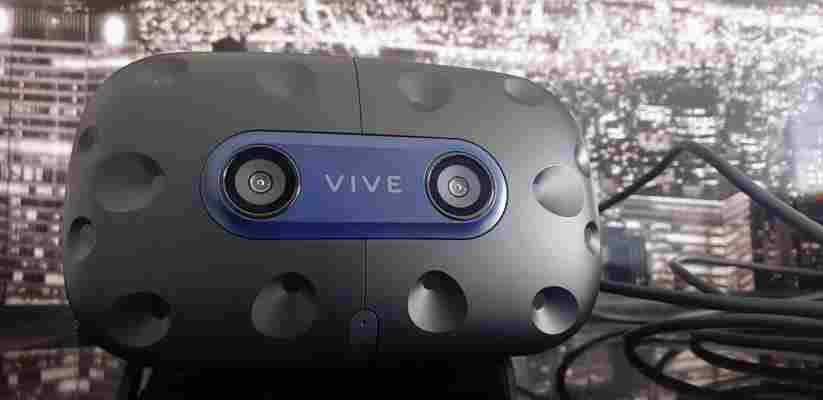
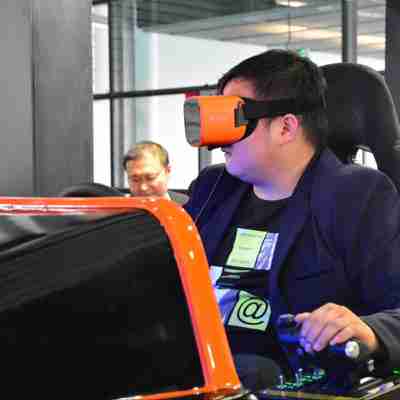

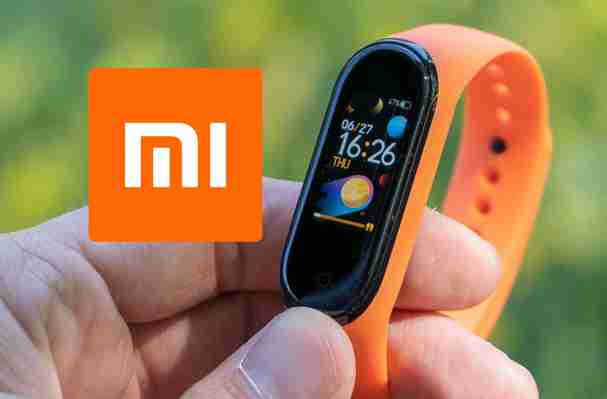
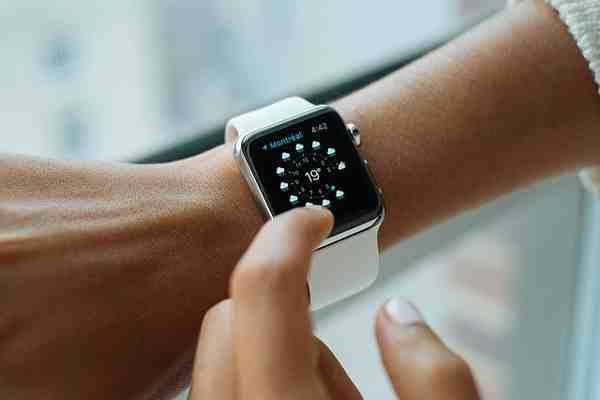
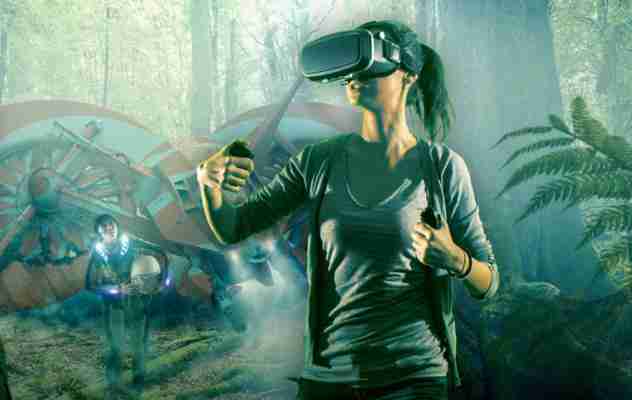

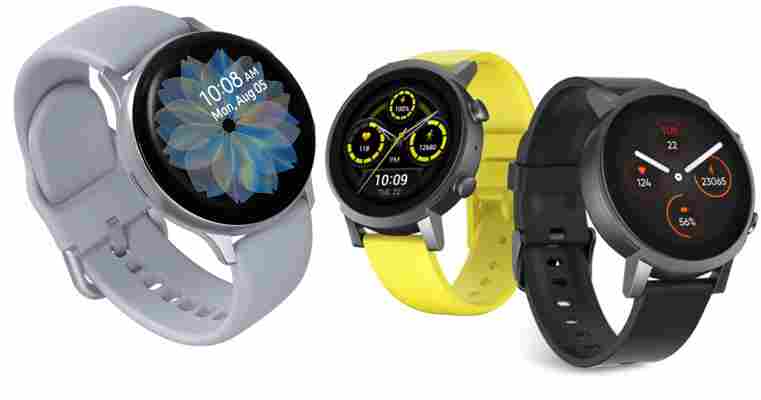
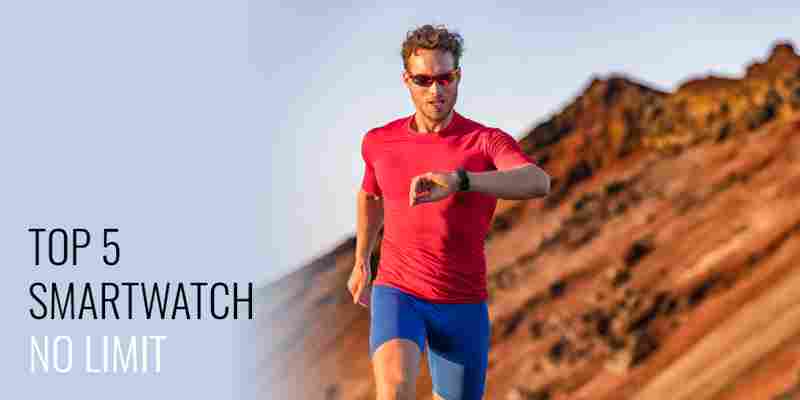


Write a Comment